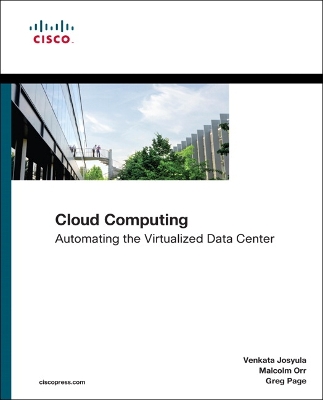Networking Technology
2 total works
The complete guide to provisioning and managing cloud-based Infrastructure as a Service (IaaS) data center solutions
Cloud computing will revolutionize the way IT resources are deployed, configured, and managed for years to come. Service providers and customers each stand to realize tremendous value from this paradigm shift—if they can take advantage of it. Cloud Computing brings together the realistic, start-to-finish guidance they need to plan, implement, and manage cloud solution architectures for tomorrow’s virtualized data centers. It introduces cloud “newcomers” to essential concepts, and offers experienced operations professionals detailed guidance on delivering Infrastructure as a Service (IaaS), Platform as a Service (PaaS), and Software as a Service (SaaS).
This book’s replicable solutions and fully-tested best practices will help enterprises, service providers, consultants, and Cisco partners meet the challenge of provisioning end-to-end cloud infrastructures. Drawing on extensive experience working with leading cloud vendors and integrators, the authors present detailed operations workflow examples, proven techniques for operating cloud-based network, compute, and storage infrastructure; a comprehensive management reference architecture; and a complete case study demonstrating rapid, lower-cost solutions design.
Cloud Computing will be an indispensable resource for all network/IT professionals and managers involved with planning, implementing, or managing the next generation of cloud computing services.
Venkata (Josh) Josyula, Ph.D., CCIE® No. 13518 is a Distinguished Services Engineer in Cisco Services Technology Group (CSTG) and advises Cisco customers on OSS/BSS architecture and solutions.
Malcolm Orr, Solutions Architect for Cisco’s Services Technology Solutions, advises telecoms and enterprise clients on architecting, building, and operating OSS/BSS and cloud management stacks. He is Cisco’s lead architect for several Tier 1 public cloud projects.
Greg Page has spent the last eleven years with Cisco in technical consulting roles relating to data center architecture/technology and service provider security. He is now exclusively focused on developing cloud/IaaS solutions with service providers and systems integrator partners.
· Review the key concepts needed to successfully deploy clouds and cloud-based services
· Transition common enterprise design patterns and use cases to the cloud
· Master architectural principles and infrastructure designs for “real-time” managed IT services
· Understand the Cisco approach to cloud-related technologies, systems, and services
· Develop a cloud management architecture using ITIL, TMF, and ITU-TMN standards
· Implement best practices for cloud service provisioning, activation, and management
· Automate cloud infrastructure to simplify service delivery, monitoring, and assurance
· Choose and implement the right billing/chargeback approaches for your business
· Design and build IaaS services, from start to finish
· Manage the unique capacity challenges associated with sporadic, real-time demand
· Provide a consistent and optimal cloud user experience
This book is part of the Networking Technology Series from Cisco Press®, which offers networking professionals valuable information for constructing efficient networks, understanding new technologies, and building successful careers.
Category: Cloud Computing
Covers: Virtualized Data Centers
This book provides an overview of Intercloud technologies, discussing the theory and providing specific examples of how these technologies work. The key value of this book is its unique perspective on cloud architecture, focusing on technology components such as virtualization, on-demand and autonomic management, security, and protocols that will enable Intercloud capabilities. Because the nascent Intercloud assumes a federated relationship amongst cloud providers, this book also addresses the new business issues faced by service providers in the Intercloud. In many ways, the Interclouds’ infancy can be likened to pre-Internet days with the potential to disrupt communications and IT as a whole, and this book will describe a phased plan that illustrates the path to a coherent Intercloud utility.
The plan takes the three primary Cloud service layers (IaaS, PaaS, & SaaS) and adds to them a new dimension paralleling the evolution of today’s networks (and network topology / connectivity paradigms). Intercloud exchange/Market place, service fulfillment, service assurance, billing, identity, security, visibility, control, optimization, application peering and federations are just a few of the many technology and business components analyzed in this book. Early use cases for the new utility include delivery of applications and services via a "public cloud". Also, "private clouds" are illustrated, where an enterprise extends its own data center dynamically in-house. And hybrid clouds are explained, in which private clouds are extended through the services of a provider, eliminating the need to inefficiently build out new capacity for each application and thus leading to a peak utilization strategy.
The authors’ unique knowledge of Cloud technology and infrastructure, as well as experience with the evolution of today’s Internet businesses, makes this book one of the most valuable titles for any IT decision maker and a must-read for anybody involved in the Cloud industry.

